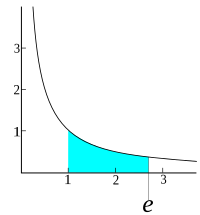
Photo from wikipedia
Evidence suggests sleep differences emerge in the first three years of life for autistic individuals (MacDuffie et al., 2020) and may be a possible endophenotype in unaffected siblings (Naeem et… Click to show full abstract
Evidence suggests sleep differences emerge in the first three years of life for autistic individuals (MacDuffie et al., 2020) and may be a possible endophenotype in unaffected siblings (Naeem et al., 2021). In neurotypical samples, postnatal depression has also emerged as a potential contributor to infant sleep challenges (Dias & Figueiredo, 2021). Questions remain on the associations between infant sleep duration, maternal postnatal depression, and family history of ASD as well as how these variables interact to predict future autistic traits. Participants (N=74) were enrolled in a prospective longitudinal study on early autistic traits and included infants with an autistic sibling (n=33, EL) and with no familial history of ASD (n=41, LL). At 6 months, caregivers completed the Edinburgh Postnatal Depression Scale (EPDS) and a 24-hour retrospective sleep log. At 12 months, clinicians administered a standardized observation of autistic traits (SORF) the includes scores related to deficits in social communication (SCD) and restrictive and repetitive behaviors (RRBs). At 6 months, EL infants spent significantly more time asleep during the day than LL infants, (t(45)=2.89, p<.01). There were not significant differences in nighttime sleep duration or EPDS scores between groups. In examining the influence of self-ratings of maternal depression and likelihood status on sleep duration, the model was significant for daytime sleep (F(2, 36)=4.27, p=.02), but not nighttime sleep. Likelihood status, not EPDS score, predicted more hours spent asleep in the daytime. When assessing the role of status and sleep-related variables on future autistic traits, only decreased nighttime sleep duration at 6 months was related to greater RRBs at 12 months (F(3, 10)=15.26, p=.02), regardless of likelihood status. The results of this study suggest that EL infants may sleep more in the daytime at 6 months. Reduced nighttime sleep at 6 months possibly signal future autistic traits, regardless of likelihood status. Future research should examine actigraphy data and its relationship to the etiology of ASD in larger samples. Funded by K23-MH120476, R21-DC071252, and T32GM081740.
Journal Title: SLEEP
Year Published: 2023
Link to full text (if available)
Share on Social Media: Sign Up to like & get
recommendations!